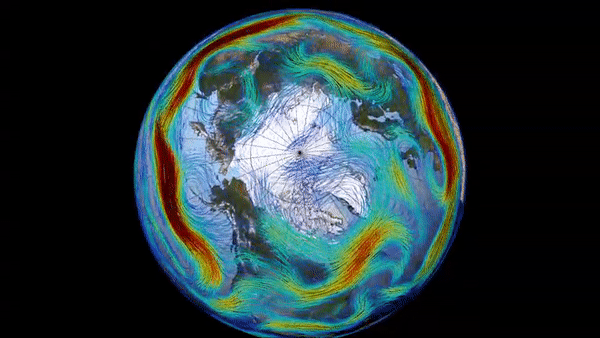

By Jeremy Deaton
Early this week, record cold blasted the Northeast, as Boston, Massachusetts saw a high of 10 degrees F, and nearby Worcester saw the temperature top out at just 1 degree F. Meteorologists say this is just the beginning of a lengthy stretch of freezing weather.
Paradoxically, frosty winter temperatures in some areas have been linked to rising temperatures around the globe. Climate change is distorting weather systems, yielding colder winter weather in parts of the world, including much of the U.S. One reason for this phenomenon is a weakening of the polar jet stream, the air current circling the Arctic.
The jet stream is the result of the difference in temperature between colder northern latitudes and temperate southern latitudes. Warm air from the equator is colliding with cold air from the Arctic, and a ribbon of powerful winds runs the length of the collision. Ushered along by the rotation of the Earth, this air current is moving west to east at speeds upwards of 200 miles per hour.
The polar jet stream. NASA
The jet stream is strongest in the winter months when the temperature difference between north and south is greatest. Cold air is denser than warm air, so when the difference in temperature is greater, the difference in density is also greater, and the barrier between cold air and warm air is firmer. Think of cold air and warm air like vinegar and oil, which are kept distinct by their different densities.
What is the jet stream and how does it affect the weather?
youtu.be
Climate change is weakening the jet stream by reducing the difference in temperature between cold, northern air and warm, southern air. As the Earth warms, it’s not warming evenly. The Arctic is warming faster than the rest of the planet, meaning it is growing closer in temperature to more southern latitudes. As a result, the barrier between cold and warm air is growing weaker, and the jet stream is going wobbly.
Instead of forming an even ring around the Arctic, the jet stream is now twisting and contorting, allowing the polar vortex, the mass of cold, dense air over the north pole, to reach its tendrils further south, chilling large parts of the U.S. and Europe. Think of the jet stream as a fence around the polar vortex. Climate change is letting the polar vortex break out of the fence.
The jet stream (pink), divides cold, Arctic air (blue) from warm air at lower latitudes (orange). Under normal conditions, the jet stream forms a firm barrier around the Arctic a). But as the Earth warms, it’s growing more wobbly (b), allowing cold air to reach further south (c). Fred the Oyster
Just as changes to the jet stream are allowing cold, Arctic air to reach further south, they are also allowing warm equatorial air to reach further north, fueling more unusual weather across the globe, both hot and cold. Last February, for example, the mercury reached 76 degrees F heat in New York City at the same time that it dipped to 35 degrees F in Southern California, all thanks to a squishier, wavier, wobblier jet stream. As the planet warms, the problem is likely to get worse.
Once the polar vortex breaks out of its pen, it takes a while to get it back in. The current spate of unusually cold weather could last several weeks, meteorologists warn, chilling much of the Eastern U.S. So bundle up. Winter is going to be around for a while.
Reposted with permission from our media associate Nexus Media.

 233k
233k  41k
41k  Subscribe
Subscribe 

